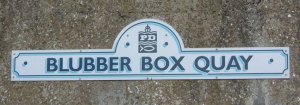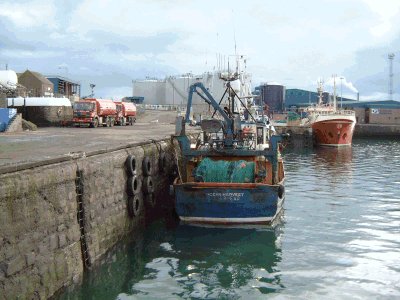| Blubber box quay, Peterhead |
|
When a whale was killed its blubber was packed into barrels and transported back to Peterhead for processing. The whalers unloaded in the south harbour at a jetty still known as Blubber Box Quay and from there the blubber was carted to the boilyards. Batches of blubber weighing several tons were boiled for several hours in a copper vessel (trypot) over a furnace. The oil that separated out was run off into cooling tanks and then put into barrels. There were three boilyards in Peterhead, all on Keith Inch, on the seaward edge of the town, to minimize the impact of the foul smells and sights produced by the industry. The Old Whale Fishing Company at 7 Ship Street was the oldest, having been founded in 1801, and continued to operate up to around 1910. The other two yards were on Castle Street. Mr. Skelton's Yard (a.k.a. the Peterhead Whaling Company) was at number 18-20 and Mr. Hutchinson's Boil Yard (a.k.a. The Union Boilyard and Thomas Arbuthnot and Co.) was based at 9-13. Today, these areas are occupied by engineering firms servicing the offshore petroleum oil industry.
Today, Blubber Box Quay is used by fishing boats. The evidence of the new oil industry, based on petroleum oil rather than on whale oil, on which our daily lives now depend so fundamentally, is clearly seen in the background. |
| Martyn Gorman · University of Aberdeen · Department of Zoology · © 2002 |

